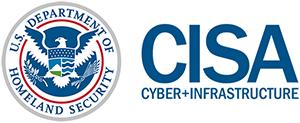
The Cybersecurity and Infrastructure Security Agency (CISA) and government and industry members of the Information and Communications Technology (ICT) Supply Chain Risk Management (SCRM) Task Force released an annual report on its progress to advance meaningful partnerships and analysis around supply chain security and resilience.
The ICT SCRM Task Force Year 2 Report builds upon previous work completed in year one of the ICT SCRM Task Force. It showcases the collective ongoing efforts of four working within the Task Force to address challenges to information sharing, threat analysis, qualified bidder and qualified manufacturer lists, and vendor assurance. It also reflects a new working group, Working Group 5, which recently released an analysis report on the impacts of the COVID-19 pandemic on ICT supply chains.
Developed through the expertise and contributions of government and industry, the ICT SCRM Task Force Year 2 Report addresses the lifecycle of supply chain risk management, including how stakeholders identify and understand risk, communicate about and work together to address risk, grow their structural operations for addressing risks, and improve their understanding and self-assessment of their risk posture.
“Government can’t act in a silo,” said Bob Kolasky, CISA Assistant Director and ICT SCRM Task Force Co-Chair. “We must work in partnership with public and private industry. The Task Force has and will continue to serve as a model of excellence in helping to improve the Nation’s collective ability to assess and mitigate threats to the ICT supply chain.”
“As we were reminded this week, supply chain security is a matter of urgency and consequence, and the best way to increase our defenses is through substantial coordination and cooperation between government and industry,” said Robert Mayer, Senior Vice President of Cybersecurity and Innovation at USTelecom and ICT SCRM Task Force Co-Chair. “That is the mission of our task force. Through this partnership with DHS and more than a dozen agencies, the Information Technology and Communications sectors has tackled tough issues like information sharing, threat assessment, qualified bidders and manufacturer lists, and security issues presented by the pandemic. This is a partnership that will expand in 2021 and further strengthen the security and resiliency of our supply chain.”
“For the past two years, the Information Technology and Communications sectors have worked hand-in-glove with CISA and other federal government partners to establish the Task Force as the preeminent public-private partnership tackling the critical issue of global ICT supply chain security,” said John Miller, Senior Vice President of Policy and Senior Counsel at Information Technology Industry Council (ITI) and ICT SCRM Task Force Co-Chair. “The Year 2 Report represents a significant milestone, delivering actionable recommendations to help public and private sector organizations better assess and manage supply chain risks, including by creating tools to address supply chain threat information sharing, threat analysis, and vendor assurance and trust. The Task Force looks forward to working with our federal partners in 2021 and beyond to operationalize the policy recommendations in this report to better manage today’s all-too-real supply chain threats and to develop future work products that will address other dimensions of this important national security issue.”
The Task Force plans to release working group reports described in the Year 2 Report in the coming weeks. Members will continue to explore means for building partnerships with international partners, new sectors, and stakeholders who can help grow the applicability and utilization of Task Force products.




